The Dover Transport Museum is a fascinating gem!
Posted by Chris Graham on 6th May 2024
Zack Stiling visits one of Kent’s hidden gems, the Dover Transport Museum, to examine some of its interesting, star exhibits.
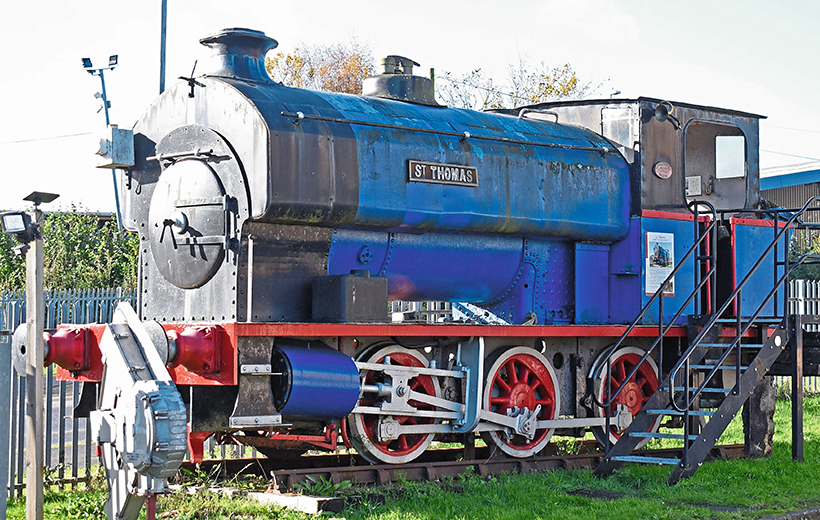
Dover Transport Museum: The ex- Snowden Colliery 1927 Avonside 0-6-0 No. 1917 greets museum visitors.
Possibly best-known for being the last town in England before you arrive in France, relatively few visitors to Dover pause to consider its rich history as a port town and fortified defence since Roman times. Among all its attractions, only the 12th-century castle has widespread fame, but anyone with an interest in transport history ought to know about, and visit, the Dover Transport Museum.

Aveling & Porter steam rollers, made in Rochester, may be Kent’s finest industrial legacy.
Inconspicuously located in an industrial estate in the village of Whitfield, just beyond the perimeter of the main town, the approach to the transport museum is unprepossessing, but the looming shape of St. Thomas lets the traveller know that he has arrived and is in the safe company of like-minded enthusiasts. St. Thomas, incidentally, is not a statue of Canterbury’s martyred archbishop, but a 0-6-0 saddle tank locomotive built by the Avonside Engine Co. of Bristol in 1927. As with most of the museum’s exhibits, she survives as a tangible bond connecting the Kent of the past with the Kent of the present.
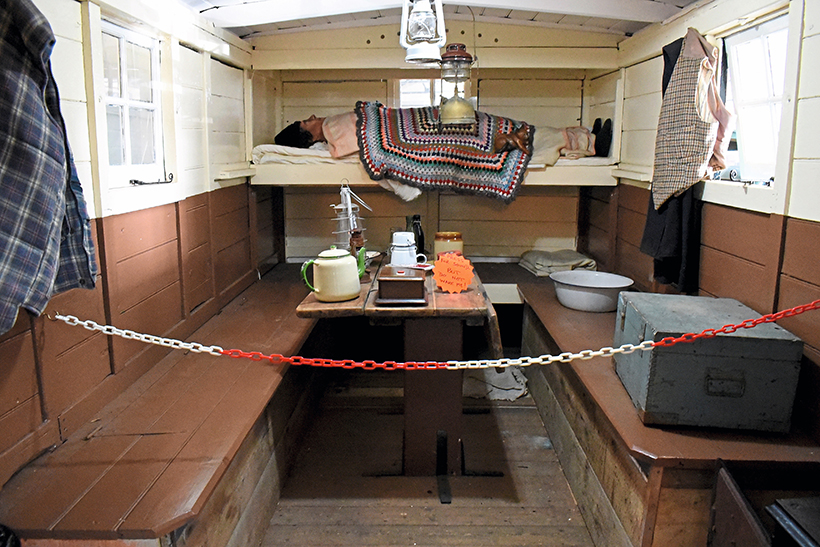
Restored living van gives an insight into the itinerant lives of traction engine crews.
She was built to serve at Snowdown Colliery, the Edwardian coal mine nine miles from Dover which, at 3,083ft., was the deepest in Kent. She was one of three built by Avonside to run on the mine’s standard-gauge railway, her sisters being St. Dunstan and St. Martin, but she was retired in poor condition in 1971, and all traces of the railway were removed when the colliery closed in 1987.
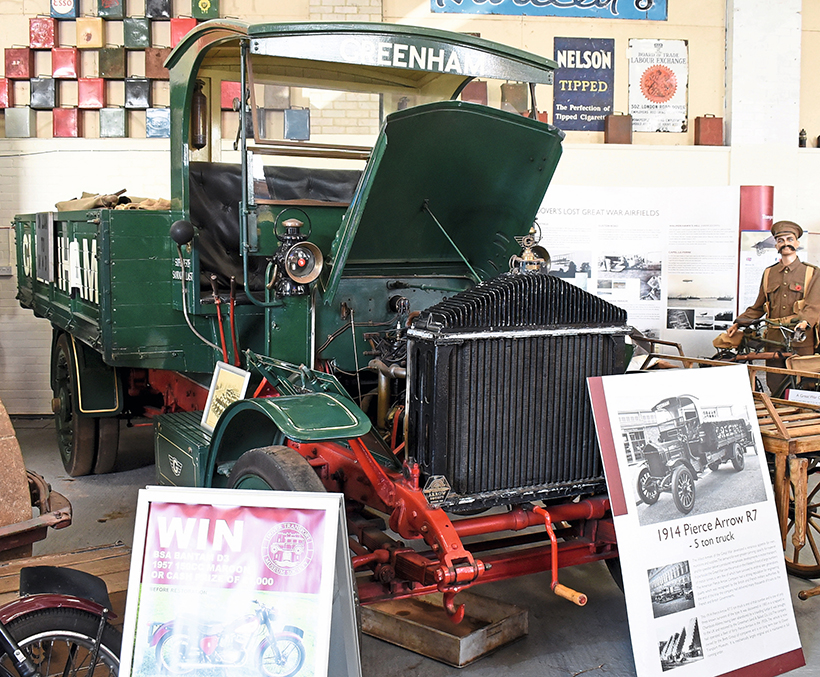
Pierce-Arrow from 1914 is the oldest vehicle in the museum.
The museum itself must by now be considered a part of Dover’s local heritage, for it is in its fifth decade of existence, having been founded in 1983. As anyone involved with similar volunteer-run organisations will know, establishing permanent, practical premises for a large collection of vehicles is difficult, and so the museum moved around to three different sites before settling at its present home, a derelict former theatre and sports complex, which was secured with the aid of a Lottery Fund grant in 2002. The buildings then had to be refurbished before they could be used, and the museum eventually opened in 2005. Even then, its collection at the time was about 40 per cent of what it is today, and its growth in recent years has been truly impressive. The present collection now far exceeds what can be placed on display at any one time, so exhibits are regularly rotated.
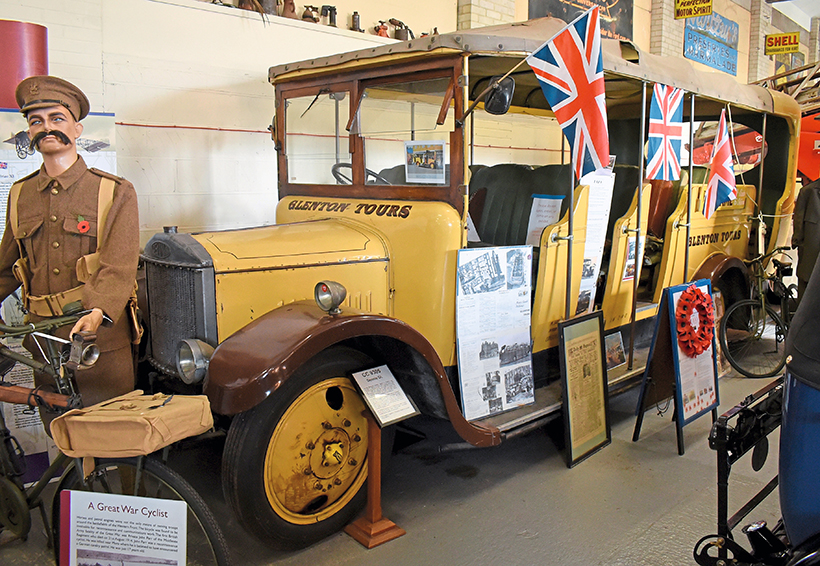
Oily-rag Dennis charabanc gave tours of the Welsh coast until 1953.
St. Thomas gives visitors a good taste of what to expect when they get inside, although she is the museum’s only non-road vehicle. Steam heritage is additionally represented by an Aveling & Porter road roller, its significance being that Aveling & Porter was Kent’s foremost producer of steam-powered road vehicles, with Thomas Aveling taking the credit for inventing both the traction engine, when he adapted a Clayton & Shuttleworth portable engine to drive itself in 1859, and the steamroller a few years later.
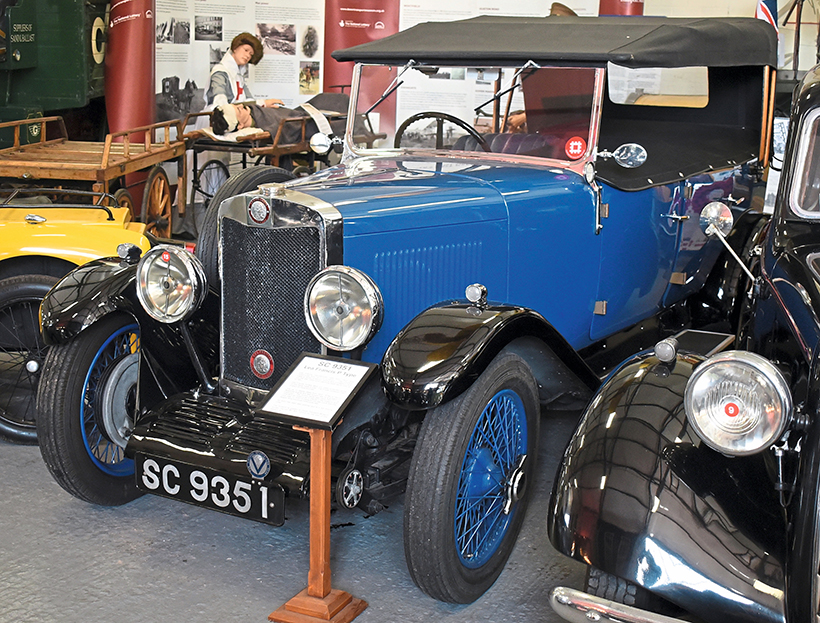
1929 Lea-Francis P-type is one of several vintage cars in the museum’s collection.
Aveling hailed from Rochester, which is where he went into business with Richard Porter in 1862, but the firm ultimately failed in 1932 when the Agricultural & General Engineers combine, which it had joined in 1919, collapsed. It was consolidated with Barford & Perkins in Peterborough, resulting in Aveling-Barford, but the Rochester works closed and all business moved to Grantham. The museum’s steamroller is a fairly late one, dating from 1924, and is Aveling & Porter E-type No. 11055 NY6931. It was new to W H Wilkinson of Llantwit Major and sold to R Brett & Co of Canterbury in 1927, where it was given fleet No. 3. The roller is exhibited alongside a period living van which the museum restored.
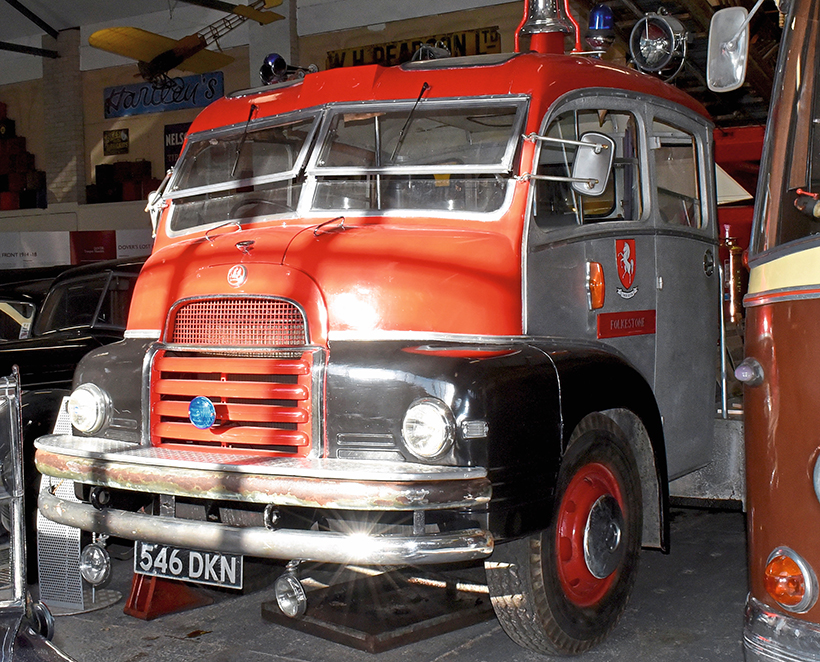
Rare ex-Folkestone Bedford turntable ladder was restored in the museum workshops.
Historic commercial vehicles account for quite a large proportion of the remainder of the collection, the earliest of them being a 1914 Pierce-Arrow R7 five-ton lorry. Some 16,500 Model R lorries were built at the Pierce-Arrow factory in Buffalo, New York, between 1911 and 1919, and an unusually large number ended up in Europe on account of the Great War; domestic lorry production could scarcely meet the demand from the French and British armies, so their respective governments started placing bulk orders from Buffalo. Many of the rugged Pierce-Arrows were kept working hard through the 1920s, when they’d been sold into private ownership, until they were eventually run into the ground; survivors today could be counted on the fingers of one hand.
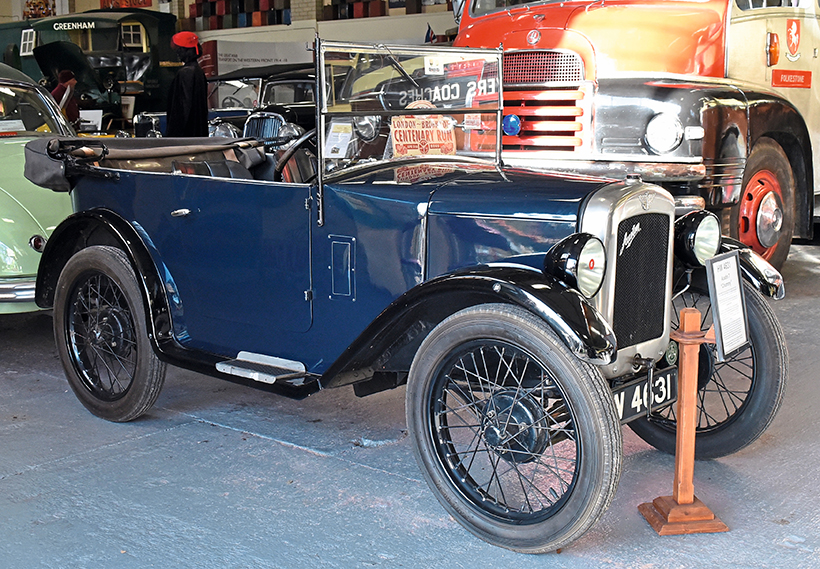
A large Austin collection includes this 1929 Seven Chummy.
The Dover example was undoubtedly a war-order job, and its later life was spent with a travelling funfair in France, which unceremoniously dumped it one day. It wound up in a scrapyard in Chambost-Allières, in the Rhône department, until it was rescued by enthusiasts in 1983. When it arrived in England, it was fittingly restored by the Greenham Sand & Ballast Co. of Staines, which had its own fleet of 40 Pierce-Arrows in the 1920s. It now looks a very handsome sight in the Greenham livery.
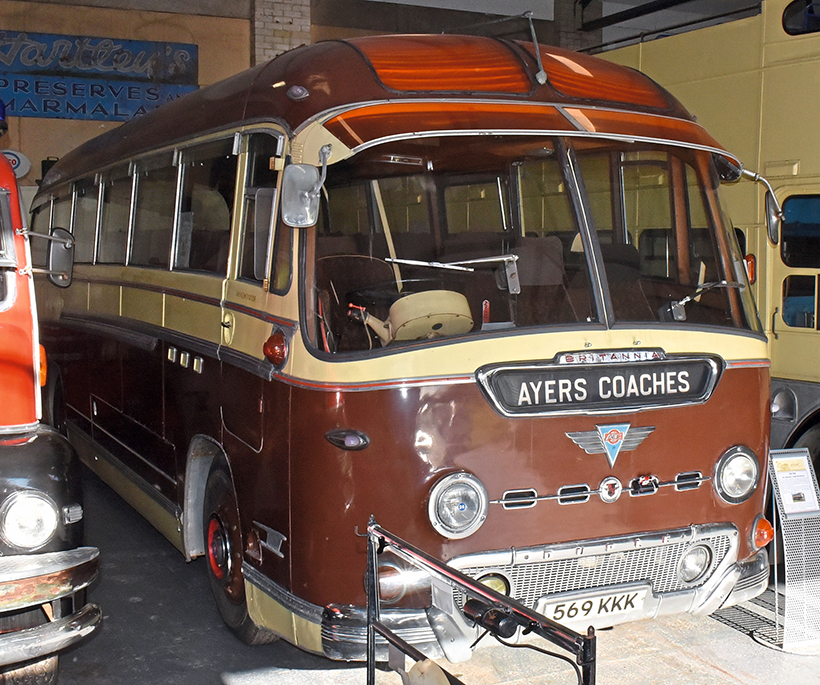
Beautiful, single-owner AEC Reliance has lived in Dover all its life.
Possibly the most characterful exhibit is the 1929 Dennis GL charabanc with a distinctive ‘toast rack’ body by John Roberts of Llandudno, so called for its orderly rows of upright, side-entrance benches which spanned the width of the vehicle. Remarkably, it is one of three survivors of a fleet built for Llandudno Urban District Council. Another has belonged to the University of Southampton since 1958, while the third operated a tourist service around Whitby until as recently as 2014. They had long lives, with the Dover Dennis, CC 9305, having been kept in service until 1953 for summer pleasure trips around the countryside of Great Orme.

Open-top Leyland Titan was converted to operate the Southend seafront service.
In 1957, it was secured by preservationist Colin Shears of Exeter, who entered it on the first HCVC London to Brighton Run in 1962, and kept it until the following year. It was then bought by coach operator Glenton Tours of Peckham Rye, whose livery it still wears. It continued to be rallied with Glenton, and may even have continued working, it being an ideal vehicle for excursions to Margate and the like. In its oily-rag state with 60-year-old paint and upholstery, it’s one of the museum’s highlights.
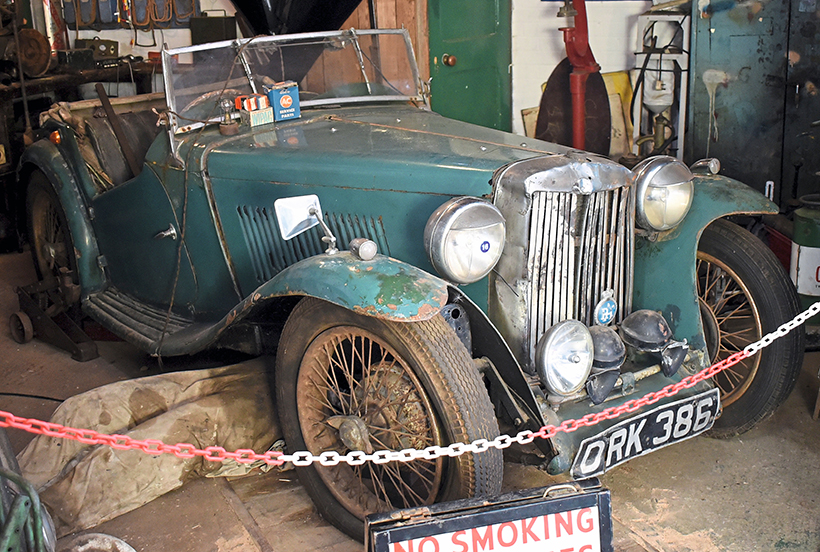
Unrestored 1938 MG TA simulates a village garage display
When we come to the war years, we remember what a dark period they were in Dover’s history. Its importance as a major port, and the main embarkation point for British troops going to France, made it an obvious target for German bombers, but even worse for it was the fact that it was within range of the long-range artillery stationed along the French coast. It must have been six long, frightening years for the residents of Dover, but the 1944 Bedford OW dropside lorry is a happier souvenir of the period.
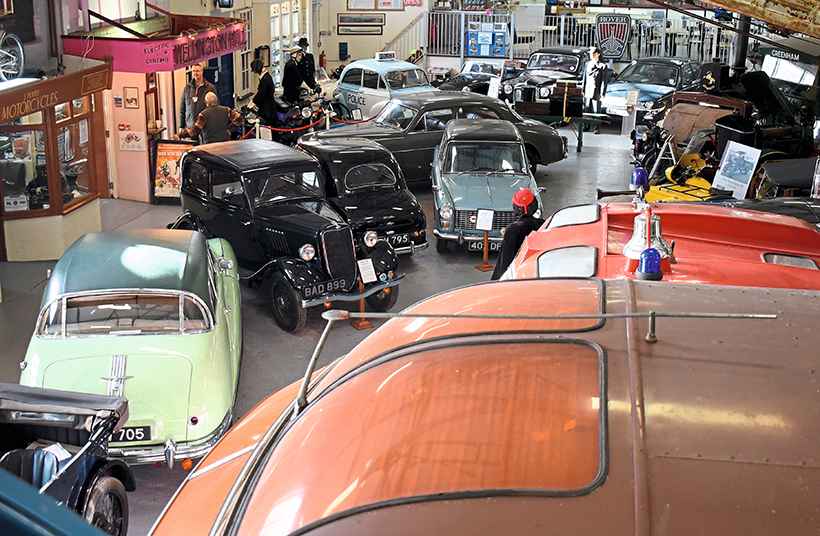
Hall One, seen from the deck of the Leyland Titan.
While Bedford’s main obligation during the war was the supply of lorries to the armed forces, the OW was adapted from the military OY and designated for essential civilian work. The museum’s example was new to Kent and undertook farm work, before being bought by the Canterbury transport firm Salvatori, founded in the 1930s as A Salvatori & Son, which undertook an attractive restoration in its historic company livery.
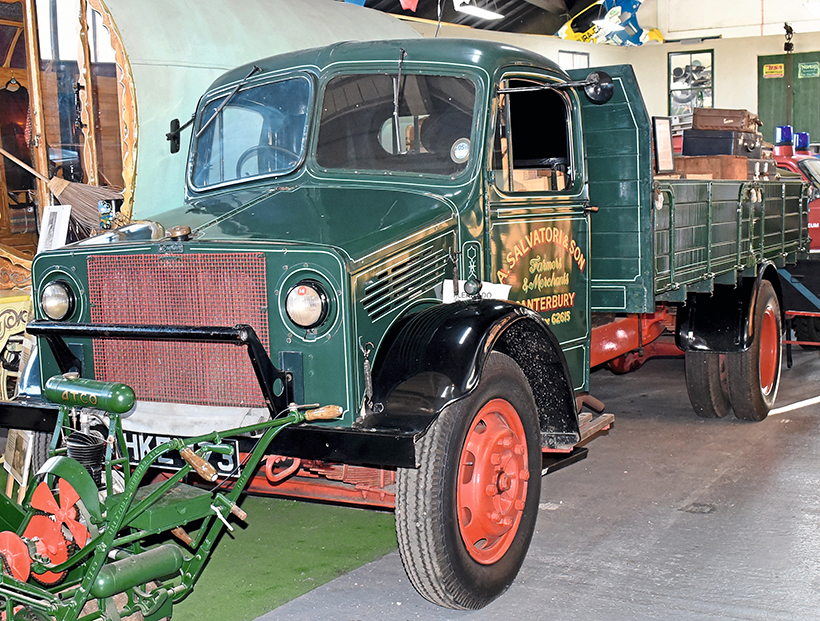
Bedford OW worked for many years on a Kentish farm.
Passing a 1950s Austin 301 two-ton lorry, which the Dover Transport Museum Society overhauled itself, we arrive at three unmissable exhibits – unmissable partly for their size, but also for their history and rarity. The first of these is a 1958 Bedford S-type with turntable ladder, which has also undergone extensive restoration in the museum’s workshops in recent years. Originally operated by the Kent Fire Brigade and stationed at Folkestone, it represents an interesting variation of the S-type of which there are not more than a handful of survivors.
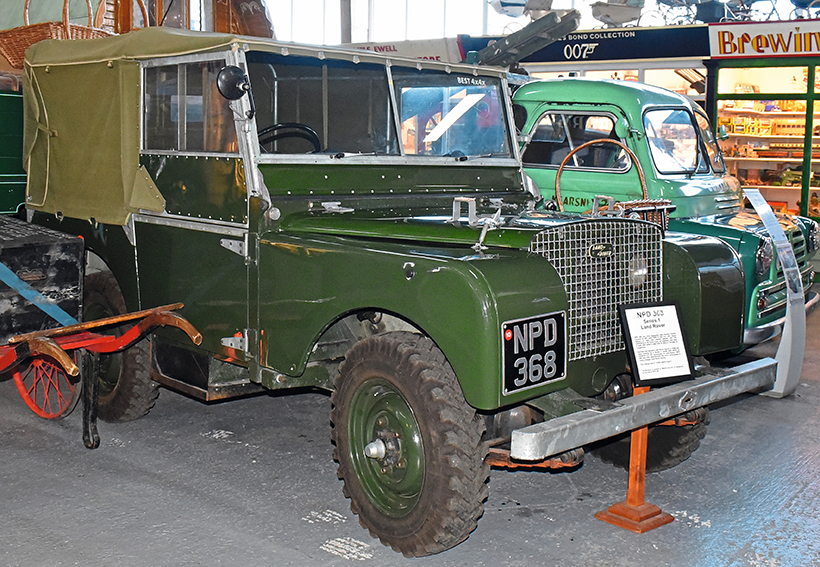
Immaculate, three-owner example of an extremely early 1949 Land-Rover.
The 1958 Leyland Titan PD3 earnt its living not in Kent but neighbouring Essex, having been supplied new to Southend Corporation Transport with a low-bridge body. When it was retired from regular service in the 1970s, rather than being sold or scrapped, it was among four Titans turned into open-top buses for summer services along the seafront.

Austin 301 is another recent beneficiary of the museum workshops.
The trio is completed by another PSV, this time a luxury coach. The beautiful 1960 AEC Reliance with Duple Britannia body well deserves its place in the museum, having been operated from new until 1986 by Ayers Luxury Coaches of Cherry Tree Avenue, Dover. In the prime of its life, it transported holidaymakers all around Britain and Europe in the greatest comfort. Like many coaches, it was demoted as it aged, and its final years in service were spent transporting workers to the Kent coalfields.
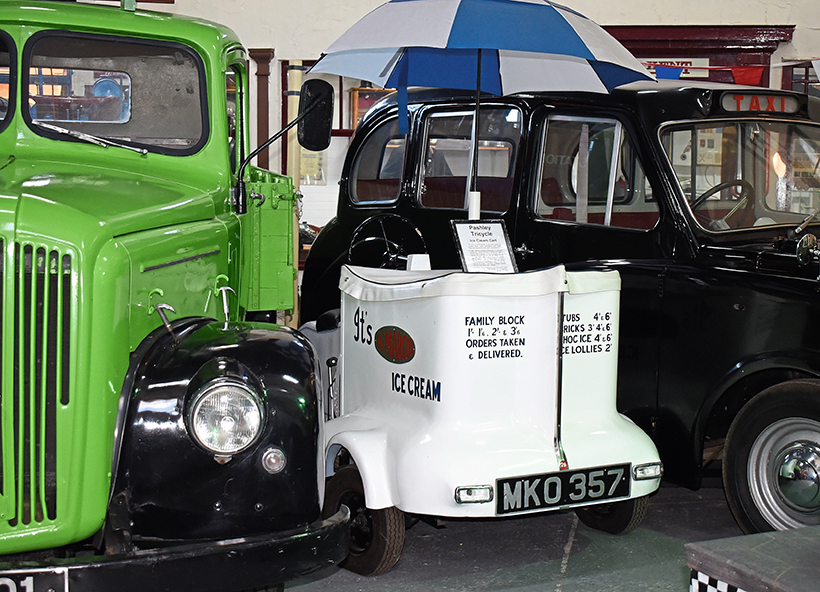
Pashley, better known for bicycles, made this strange 200cc Villiers-engined ice-cream cart in the 1950s.
There were three collieries – Betteshanger, Snowdown and Tilmanstone – within 10 miles of Dover, with each one employing between 900 and 2000 people. While the Reliance has been many times to the Continent and seen its finest sights, it has never known any home other than Dover; it was a gift to the museum directly from the Ayers family.

Fibreglass fascinator: the Winchester taxi failed in period, but it’s one of the stars of the museum today.
For all that the heavy commercials might dominate the museum’s two vehicle halls, it would be a foolish visitor who overlooks the smaller vehicles, for they also have some fascinating stories to tell. For sheer intrigue, there is no beating the 1966 Winchester taxi, an oft-forgotten footnote in the history of London’s black cabs. Unusually styled, its shape is traditional and vaguely similar to the FX4, but with its absence of brightwork and proliferation of round, jelly-mould edges, there is no concealing the fact that it’s made from oh-so modern fibreglass.
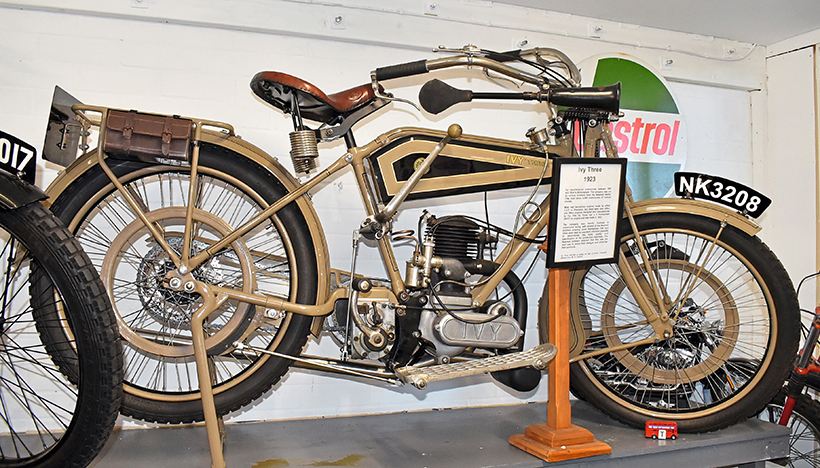
1923 Ivy Three is a rare survivor from the Birmingham marque.
The Winchester story was a strange one. In the early 1960s, the new FX4 was experiencing teething problems which made it unpopular with cabbies, and there was demand for alternatives. The Owner Drivers Society, which represented owner-driver cab drivers, felt it could do better and set up Winchester Automobiles (West End) Ltd. Choosing fibreglass bodies for economy and convenience of production was not sufficient to make the Winchester a success.

A c1921 Silver Prince is a brilliantly obscure machine produced for only a few years by the Tryus Cycle Co. of Birmingham.
Drivers found it uncomfortable, noisy and slow, the whole operation was amateurishly run and the FX4 had improved considerably by the time the Winchester reached the market in 1962. Nevertheless, Winchesters were built up to 1972, but production for all models did not exceed 200. The museum’s was restored by the late Paul Lancaster, who cared for it from 1981 to 2015.

1923 Levis Model S is another Kent-registered vehicle which has been in the county from new.
After all that, the 1958 Bedford CA dropside might look slightly unassuming, but it’s one of the most important exhibits viewed from the perspective of local social history. It was sold new in Dover for £683 15s 8d from the Castle Street premises of Martin Walter Ltd. Although best-known as a coachbuilder in Folkestone since the 18th century, Martin Walter later benefitted from distribution rights for Vauxhall and Bedford around east Kent.

All the major British marques are represented in the motorcycle display.
The CA’s buyer was Ernie Curtis, who belonged to the building firm of Curtis Brothers in Kearsney, a village just about a mile as the crow flies from the transport museum. Ernie held onto the CA until 2009, two years before he died. Although it left the family, it was given to the museum on loan and then, in a very happy quirk of fate, it was bought back by Ernie’s son John Curtis in 2023, who has extended the loan agreement with the museum.

1958 Bedford CA was owned for 50 years by a local builder.
That accounts for some of the commercial vehicles kept on display at the Dover Transport Museum, but there’s more, of course. 15 to 20 pre- and post-war cars might be on display at any given time, plus dozens of motorcycles, scooters, autocycles and cyclemotors. One exhibition of which the museum is particularly proud is its virtually comprehensive collection of Norman motorcycles and autocycles which were made in Ashford between 1938 and 1963. The local maritime heritage is commemorated through a large collection of model boats and ships, and there’s also a collection of memorabilia pertaining to the East Kent Road Car Co. To complete the attraction, the museum is lined with historic shop fronts housing everyday objects of yesteryear, so the visit really is a walk down memory lane.
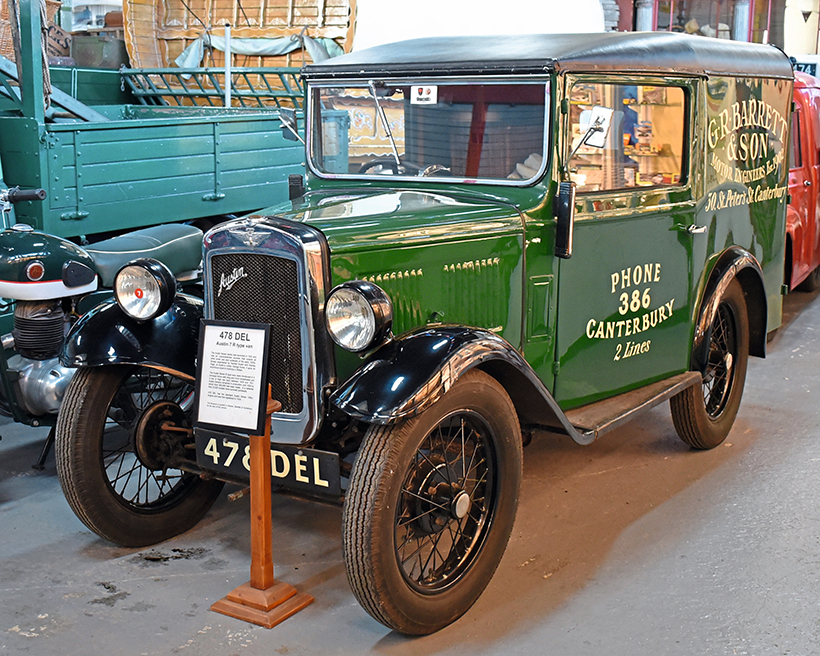
Charming 1934 Austin Seven van in the livery of G R Barrett & Son, Motor Engineers, of Canterbury.
Arguably the best thing about the collection is that the museum’s volunteers keep most of the objects in running, roadworthy condition and several are driven to events throughout the year. In addition to being open year-round every Wednesday and Sunday, the museum also hosts events of its own and rotates its exhibits from time to time. For any enthusiast living in or visiting the south-east, a visit is highly recommended.

1971 Morris Minor Royal Mail van spent its working life around Guildford.
This feature comes from the latest issue of Old Glory, and you can get a money-saving subscription to this magazine simply by clicking HERE

Previous Post
Rare 1959 Austin 152 Bluebird Highwayman camper van
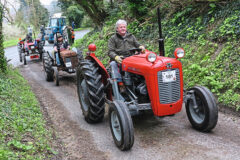
Next Post
National Vintage Tractor Road Run, 2024



